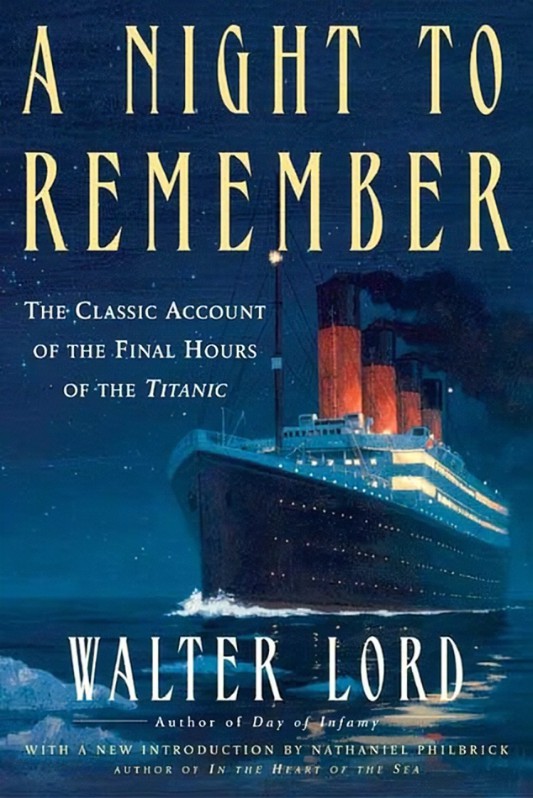Book Review: A Night to Remember by Walter Lord
Time and place: 11:40 PM, April 14, 1912, aboard the passenger liner Titanic in the North Atlantic. Lookout Frederick Fleet spots an iceberg dead ahead. The ship turns to avoid this hazard, but it’s too late. A hole is ripped in the ship’s side below the waterline, exposing five of its sealable compartments to flooding. The ship’s innovative design means that it can still float if any two compartments are flooded, leading to the Titanic being described as “unsinkable.” It wasn’t.

This book tells the details of that event in as near to chronological order as the author could arrange them. Walter Lord interviewed many of the survivors, and pieced together the best construction he could from other accounts that had been published in the years before 1955. There was even one of the crew who was still serving on passenger liners at the time! He mentions that the contemporary newspapers weren’t much help as they printed all sorts of speculation and made up details for better stories. (And we think the media is unreliable today!)
The first section of the book covers from the first sighting of the iceberg to the moment the Titanic completely sunk, about 2:20 AM. It reflects the confusion and mounting terror that the crew and passengers felt, and the conditions that led to the lifeboats (too few) not saving even as many people as they could hold.
Then Mr. Lord flashes forward to cover some of the effects the sinking had on later events. Iceberg patrols, sufficient manning of ship radios, and enough lifeboats for everyone became the rules. There has never been another ship disaster quite like the Titanic because that disaster happened. It was also a major blow to early 20th Century optimism, soon to take a further beating with World War One. It was the end of an era in many senses.
The narrative picks up again with the survivors trying to stay alive until rescue could come, and the life-or-death decisions made by the various boats. There are the stories of two other ships, the Californian, which was tantalizingly close but misread all the signals and did nothing, and the Carpathia, the captain of which dropped everything and rushed to the rescue, but arrived hours later after many passengers and crew had already succumbed to the icy waters.
The details grow sparser after that, but there are still moments both joyous and heartrending aboard the Carpathia, and at the docks in New York City.
My edition includes maps of the Titanic, and a passenger list, with those who are known to have survived italicized. In his acknowledgements, Mr. Lord mentions that because there were conflicting memories and reports, the accuracy of his timeline is not absolute and of course those who didn’t survive might have other tales to tell.
The writing is choppy at times, as Mr. Lord dashes from one part of the ship to another to describe events happening at the same time to different people. There are actions both gallant and stupid, decisions wise and foolish.
There have been many other books on the Titanic, but this is a good one to start with for the general public. Check your local library!
There is, of course, a movie based on this book, which is also considered a classic.


Many years after, and also after the discovery of her wreckage, Lord wrote a sequel [i]The Night Lives On[/i].